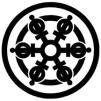How Most Religions Start





NEWER RELIGIONS
Church histories of the Mormons (the Church of Jesus Christ of Latter-day Saints) report that their founder, Joseph Smith, Jr., had a vision in 1820. Two personages, whom he later identified as G-d the Father and Jesus, appeared and revealed to him that all existing churches were counterfeit. In 1823, Smith was visited again, this time by the angel “Moroni,” who informed him of the existence of “golden plates” containing an inscription in “Reformed Egyptian” about the ancient inhabitants of North America. In 1827, the angel reappeared to reveal the plates’ exact location. Smith immediately set to work translating them, and that translation became the Book of Mormon. Later. Smith and an acquaintance, Oliver Cowdery, had a joint vision of John the Baptist, who conferred upon them “a restored Aaronic Priesthood.” In another vision, Peter, James, and John gave Smith and Cowdery “the higher priesthood of the Apostles.” Smith continued to have regular revelations, which he related to his followers and published in another book—The Doctrines and Covenants.1
“I AM” (or the “Saint Germain Foundation”) was founded by Guy Ballard in 1930. Hiking alone near Mt. Shasta in California, Ballard claims to have been approached by the reincarnation of the Comte de Saint Germain, an eighteenth-century French occultist. and appointed to spread a new, true religion. Ballard published the account of his initial interchanges with Saint Germain (Unveiled Mysteries) in 1934, and over the next four years he wrote half a dozen more books describing Saint Germain’s more than 3,000 discourses and decrees. Thousands attended Ballard’s seminars in Chicago, New York, Washington, D.C., and Los Angeles until his death in 1939, His followers continue to teach about Ballard’s revelations, and in 1990 there were more than 300 “I AM” centers in more than twenty-five countries[2]
The Unification Church, popularly known as “the Moonies,” also began with one man’s revelation. On Easter morning, 1936, Jesus came to sixteen-year old Sun Myung Moon and told him to proclaim himself the new Messiah. In 1980 the Church reported over 120 centers worldwide.[3]
Eckankar also started with John Paul Twitchell’s revelations and “astral” (out-of-body) travel. Before his death in 1971, Twitchell claimed to be the 971st ECK Master and a spiritual descendent of “an unbroken chain of Vaiargi Masters.” In 1988 Twitchell’s Church reported 127 U.S. centers and 284 worldwide.[4]
The beginnings of Christian Science[5], Theosophy[6], Children of G-d[7], and Elan Vital[8] are virtually identical. In fact, brief histories of almost all new religious groups sound the same: one or two people have a revelation and persuade others to follow. In all of these cases, the religion’s credibility rests on the credibility of its one or two founders.
OLDER RELIGIONS
According to Buddhist texts, Buddhism began when a wealthy eastern prince, Siddhartha Gautama, abandoned his family’s plush estate to search for the truth. After a nearly fatal immersion in asceticism, Gautama retreated to the “Middle Way,” studied with teachers of yoga and philosophy, and eventually settled beneath a Bodhi tree to “put himself into a trance, intent of discerning both the ultimate reality of all things and the final goal of existence.”[9] With no one present, Prince Gautama succeeded, and the week-long trance carried him to infinite heights of awareness and peace: “He passed through the eight stages of Transic Insight, and quickly reached their highest point. . . . Then he had achieved correct knowledge of all there is to be known, and he stood out in the world as a Buddha. “[10] According to Gautama’s report, in his vision “the whole universe was illumined, rain and blossoms fell from the heavens, and even the sages in heaven, recognizing the supremacy of [Gautama’s] enlightenment, bowed [to him].”[11] Gautama emerged from that solitary revelation to begin his 45 year career as a religious teacher and leader.
Islam is another religion rooted entirely in the experiences of one man, Muhammad, born in Mecca, Arabia around 570 C.E.. At the age of forty, Muhammad “had an experience in which a message somehow became present in his mind; and eventually he came to believe that this was a message from G-d.”[12] Eventually G-d told Muhammad that he had been chosen as the Divine messenger and “Seal of the Prophets” (khatm). Muhammad continued to receive messages throughout his life, and slowly these messages were gathered into suras (chapters) and written down, eventually forming the Koran.
The Koran describes other people who witnessed oddities indicating that Muhammad was a legitimate prophet. Muhammad’s mother reportedly experienced” none of the difficulties of pregnancy,” and she “heard a voice one day which told her that her son was to be a ruler and prophet, and that she should name the child Ahmad, this is Muhammad the illustrious.”[13]The Koran reports that Muhammad was born clean, circumcised, and with the umbilical cord already cut and tied; and that when Muhammad was twelve years old, a Syrian monk noticed a tree lowering its branches to shade the boy from the sun.[14]
CHRISTIANITY
Traditional Christian claims about Jesus’ divinity rest on the virgin birth, resurrection, and the miracles he performed during his lifetime, These claims have varying levels of verifiability.
Nobody but Jesus’ mother, Mary, could have known if he were really the product of a virgin birth. Regarding the resurrection, former president of the Catholic Biblical Association Raymond E. Brown admits that “the New Testament does not make claim that anyone saw the resurrection,” and therefore “the reality of the bodily resurrection hinges on the missing body or the empty tomb and, above all, on the validity of the experiences of those who claimed they saw Jesus risen.”[15]
According to Christian tradition, eleven (of the twelve) disciples and Mary Magdalene saw Jesus alive after his crucifixion,[16] and “the apostles” saw Jesus ascend into the heavens at the conclusion of his earthly mission.[17]
Christianity’s credibility derives mostly from its descriptions of the miracles Jesus performed. For instance, “the disciples” saw Jesus walk on the Sea of Galilee.[18] The text fails to mention who the disciples were, or how many of them were present, but, given the plural reference, there must have been at least two or as many as all twelve.[19] Also, three disciples (Peter, James, and John) witnessed Elijah and Moses materialize, confer with Jesus, and then disappear again,
One might argue that Christianity has an even more solid basis. Many times “a crowd” saw Jesus “heal” the disabled, blind, and insane. (See, for example, Mark 2: 12; 8:24-5; and 5: 15.) Christian sources also describe how Jesus fed “as many as 5,000 men” with only five loaves of bread.[20]
 SEE ALSO: A Rational Approach to the Divine Origin of Judaism
SEE ALSO: A Rational Approach to the Divine Origin of Judaism
SOURCES
[1]See Church History in the Fullness of Times: The History of the Church of Latter-day Saints, Salt Lake City, UT: Church Educational System, Church of Jesus Christ of Latter-day Saints, 1989.
[2] J. Gordon Melton, Encyclopedia Handbook of Cults in America, New York: Garland Publishing, 1992, p. 65
[3] Ibid., p. 304.
[4] Ibid., p. 214.
[5] See Stephen Gottschalk, The Emergence of Christian Science in American Religious Life, Berkeley: University of California Press. 1973; and Robert Peel, Christian Science: It’s Encounter with American Culture, Garden City, NY: Doubleday and Company, 1965.
[6]See Joy Mills, 100 Years of Theosophy: A History of the Theosophical Society in America, Wheaton, IL: Theosophical Publishing House, 1987; and Marion Meade, Madame Blavatsky: the Woman Behind the Myth, New York: G.P. Putnam’s Sons, 1980
[7]See Samson Warner, We Are the Children of God, Rome, Italy: Children of God Press, 1977; and Final Report of the Activities of the children of God to the Honorable Louis J. Lefkowitz, New York: Charities Fraud Division of the Attorney General’s Office, 1974.
[8]See Guru Maharaj Ji, The Living Master, Denver: Diving Light Mission, 1978; and Maeve Price, “The Divine Light Mission as a Social Organization,” in Sociological Review, Vol. 27 #2, May 1979, p. 279-96
[9]Asvaghosa, The Buddhacarita, (second century Buddhist narrative), reprinted in Ninian Smart and Richard D. Hecht, eds., Sacred Texts of the World: A Universal Anthology, New York: The Crossroad Publishing Company, 1982, p. The Cros.road
Publishing Company, 1982, p, 233-4.
[10] Ibid., p. 234.
[11] Kenneth Kramer, World Scriptures: An Introduction to Comparative Religions, New York: Paulist Press, 1986, p. 76.
[12] W. Montgomery Watt, “IsIam,” in Ian Harris., Stuart Mew.. Paul Morris., and John Shepherd. Contemporary Religions: A World Guide. Essex, UK: Longman Group Ltd., 1992. p. 21.
[13] World Scriptures, p. 252.
[14]Ibid., p. 253.
[15] Raymond E. Brown. “The Resurrection of Jesus.” in The New Jerome Biblical Commentary, Raymond Brown, Joseph Fitzmyer and Roland Murphy, eds., Englewood Cliffs, NJ: Prentice Hall, 1990, p 1373-4.
[16] See Mark 16:1-20; Matthew 28:1-20; Luke 24; and John 20. The Gospels disagree over whether Jesus appeared only in Jerusalem, only in the Galilee, or in both sites. See Raymond E. Brown’s discussion, “The Resurrection of Jesus,” p. 1375
[17] Acts 1:9-11
[18] Mark 6:45-52 and John 6:16-21.
[19] There exists a disagreement among Christian sources over who the disciples were. Mark and Matthew, for example. list ~Thaddaeus. among the twelve, while Luke and Acts have no record of such a disciple. Luke and Acts likewise list “Judas of James,” a name missing in Mark and Matthew.
[20] John 6:10. Mark omits any mention of the actual number of witnesses, describing only a “large crowd’ (6:34) that “sat down on the ground in squares of hundreds and fifties.” (6:40).
—
The start origin of Buddhism, Islam, Christianity, Mormon, Eckankar, the Moonies, I AM, Christian Science, Theosophy, Children of God, Elan Vital
by Rabbi Lawrence Kelemen
Posted in: Jewish Beliefs & Philosophy



